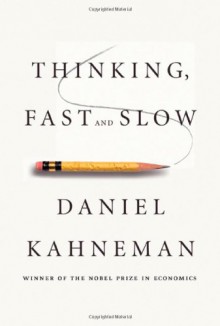Thinking, Fast and Slow is a 2011 book by Nobel Memorial Prize winner in Economics Daniel Kahneman which summarizes research that he conducted over decades, often in collaboration with Amos Tversky.[1][2] It covers all three phases of his career: his early days working on cognitive bias, his work...
show more
Thinking, Fast and Slow is a 2011 book by Nobel Memorial Prize winner in Economics Daniel Kahneman which summarizes research that he conducted over decades, often in collaboration with Amos Tversky.[1][2] It covers all three phases of his career: his early days working on cognitive bias, his work on prospect theory, and his later work on happiness.
The book's central thesis is a dichotomy between two modes of thought: System 1 is fast, instinctive and emotional; System 2 is slower, more deliberative, and more logical. The book delineates cognitive biases associated with each type of thinking, starting with Kahneman's own research on loss aversion. From framing choices to substitution, the book highlights several decades of academic research to suggest that people place too much confidence in human judgment.
źródło opisu: http://en.wikipedia.org/wiki/Thinking,_Fast_and_Slow
źródło okładki: http://en.wikipedia.org/wiki/Thinking,_Fast_and_Slow
show less






 10 years ago
10 years ago